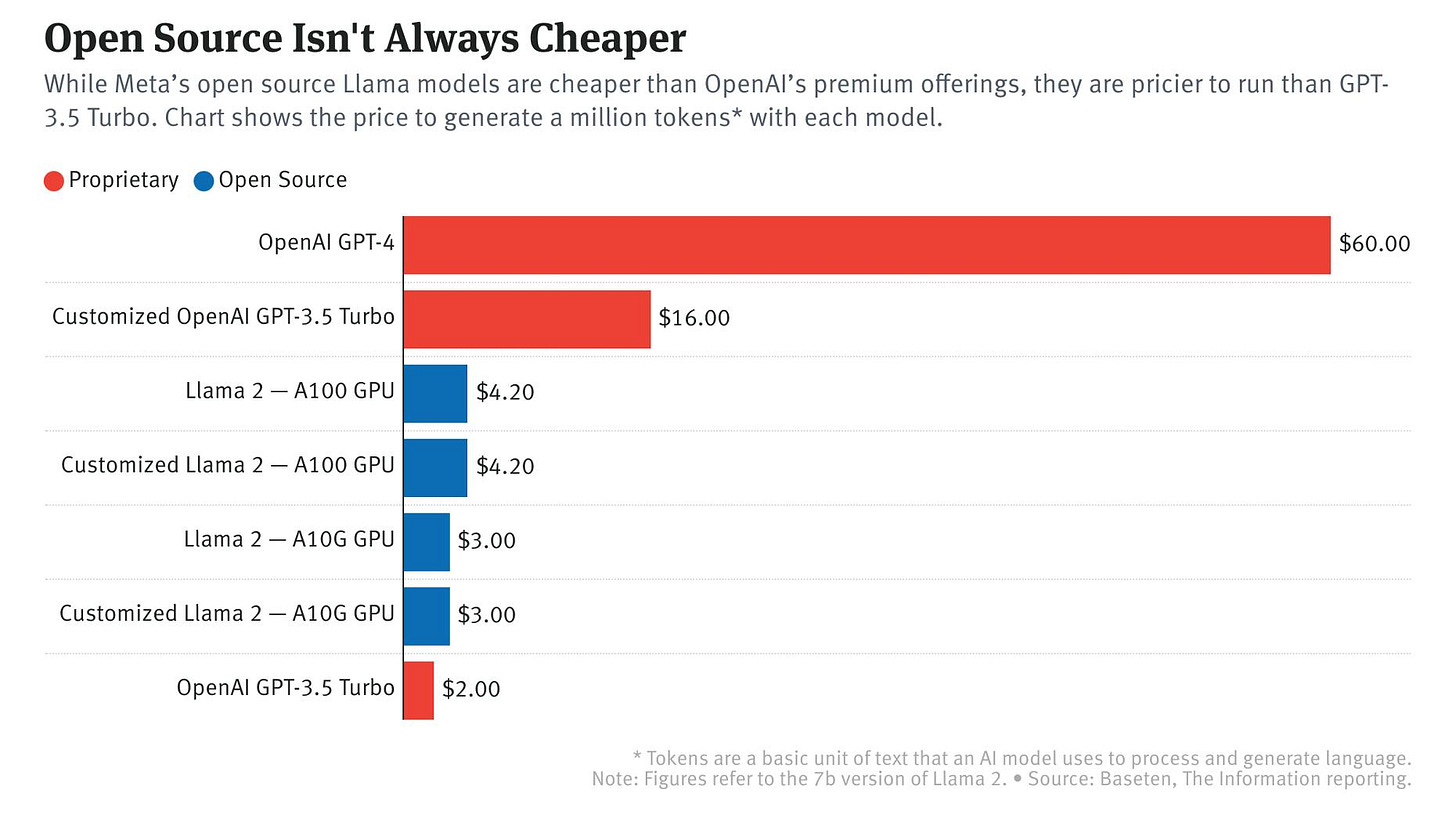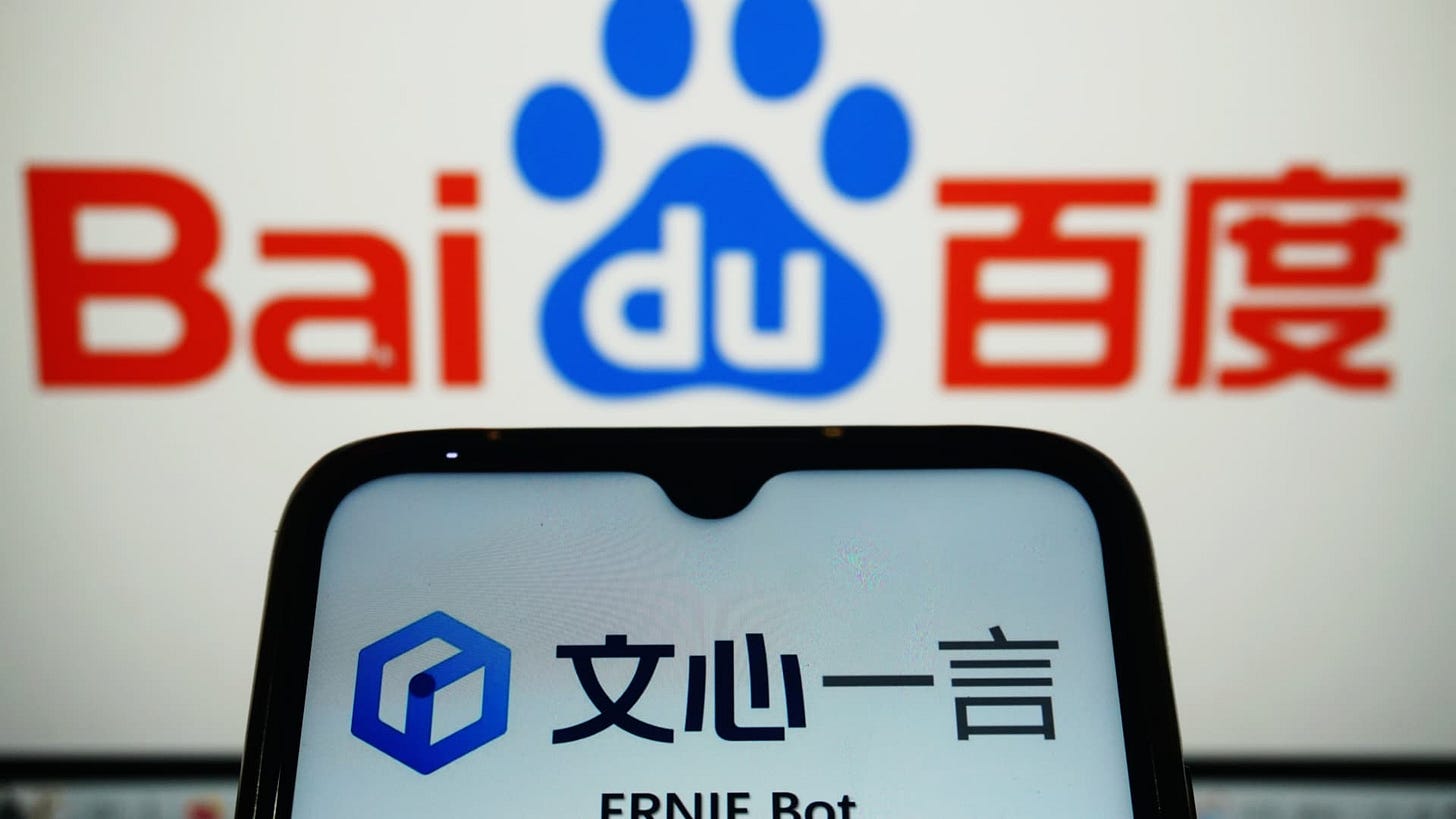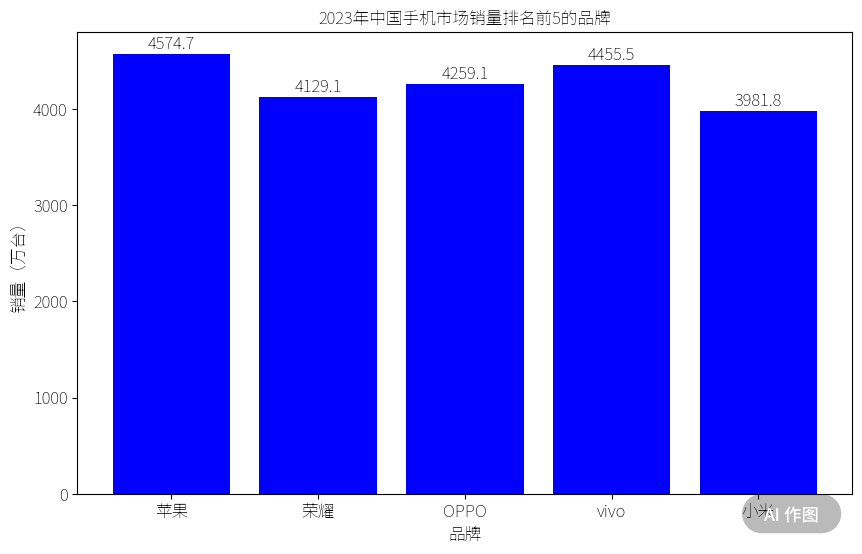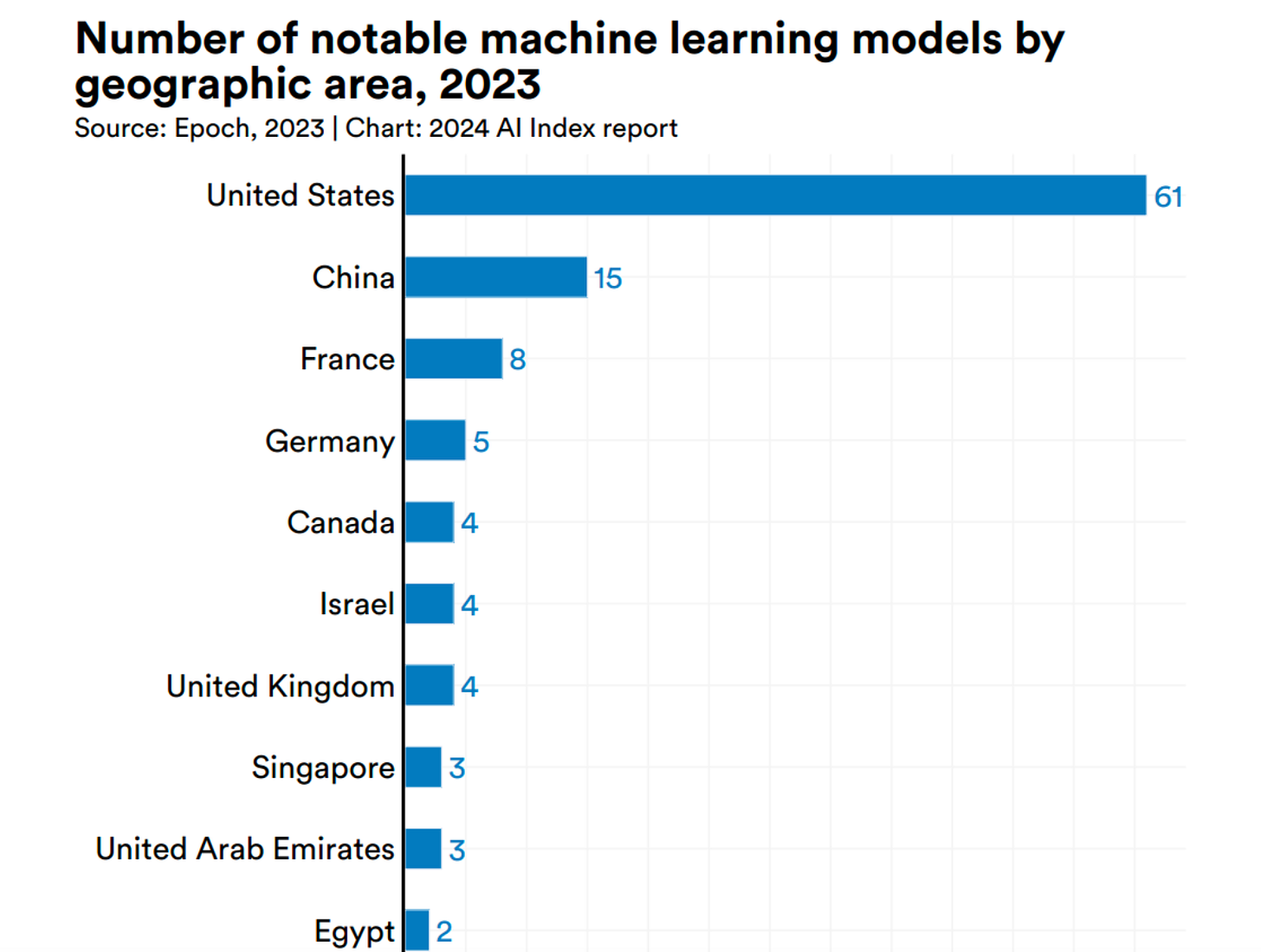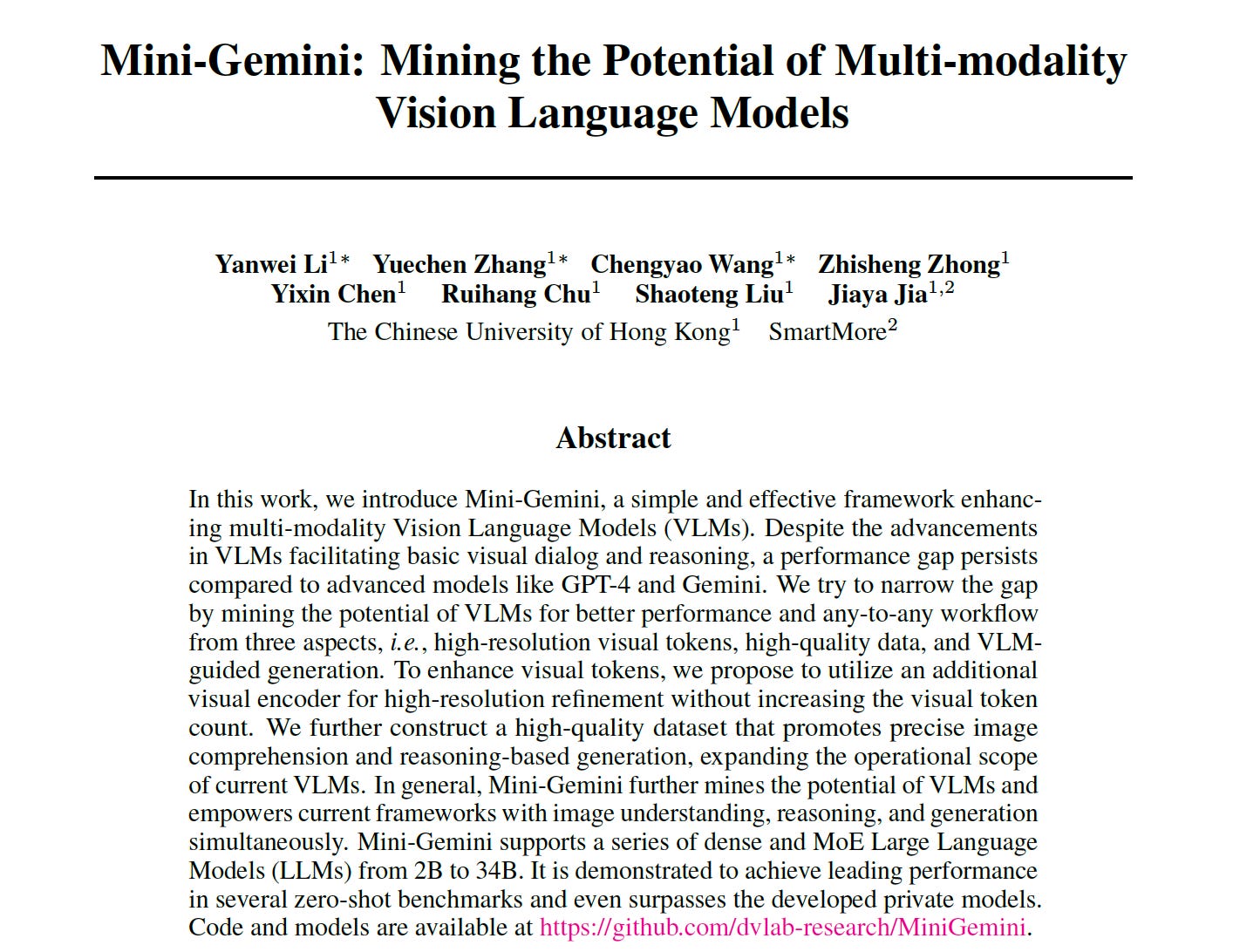🦙What Llama 3 Means to China, ERNIE Bot Hits 200 Million Users, and China Trails US in AI Models
Weekly China AI News from April 15, 2024 to April 21, 2024
Hello readers, in this weekly issue, I’d like to discuss the implication of Llama 3 for China’s AI industry. Baidu’s ERNIE Bot reached a milestone of 200 million users. According to Stanford University’s latest report, China has produced 15 notable models in 2023, compared to the 61 models from the U.S.
How Llama 3 Will Impact China’s AI Landscape
What’s New: On April 18, Meta unveiled its latest open-source Llama 3 series, which showcases superior performance over Llama 2. This launch poses a significant challenge to other Western LLM makers such as Anthropic, Google, and Mistral.
What I wanted to discuss is its potential impact on the Chinese LLM industry. Below are some of my preliminary thoughts and welcome your comments on this topic.
Good news for applications: The release of Llama 3 8B and 70B offers Chinese AI application developers access to more powerful open models. Using Llama models in Chinese AI applications is nothing new. While China restricts nearly all Western LLMs, these regulations do not apply to open-source models that are not used to provide generative AI services to the public.
Allen Zhu, a prominent Chinese investor who backs Didichuxing and Xiaohongshu, once said the release of Llama 2 as a pivotal moment for Chinese AI applications. He also invested in multiple startups that benefit from AI products based on Llama 2.
Bad news for Llama copycats: Llama 3 is expected to threaten Chinese open AI models, especially Llama copycats. Merely three days post-launch, the HuggingFace community witnessed six Chinese fine-tuned Llama 3 models. If these post-pretrained or fine-tuned Llama 3 models match or exceed the performance of leading Chinese open LLMs, the rationale for developing a model from scratch becomes questionable, especially with the anticipated summer release of Llama 3 400B, which will reach GPT-4 level and include multimodality and multilingual capabilities.
However, I am not too worried about leading Chinese LLM startups such as Zhipu AI, MiniMax, and Moonshot, as they have recently secured funding and found their competitive edge beyond mere model development (I will discuss this in a future post). Also large enterprise clients would likely prefer domestic LLMs to mitigate regulatory risks.
Closed vs Open Models: The release of Llama 3 also sparked a debate in China regarding whether open models will match closed models.
Baidu CEO Robin Li argues that open models will increasingly lag behind. Li asserted that compressed, closed models perform better than their open counterparts and cost less to run.
Opposite views use Meta’s Llama 3 as proof that open models are narrowing the performance gap with closed models.
My two cents: Unquestionably, open source plays a significant role in enhancing the prosperity and democracy of AI. However:
According to the AI Index report from Stanford University, there is a notable performance gap between open and closed models.
While open models are making strides in performance, they are not necessarily a cost-effective alternative to closed models. Running open models can be more costly than closed models, as detailed in The Information’s story from last November.
My question is whether Llama’s success stems from its open-source nature or Meta’s substantial AI resources, including 25K GPUs and 15T of training data.
Cloud Service: China’s leading public cloud service providers are embracing Llama 3, aiming to attract developers and SMEs.
Baidu AI Cloud said it is the first platform to support fine-tuning and deployment of Llama 3 models sized 8B and 70B.
Tencent Cloud is helping developers in fine-tuning Llama 3 and has completed inference testing of the series.
Alibaba Cloud has published a guide to help developers fine-tune the Llama 3 8B model on its AI Platform.
Baidu's ERNIE Bot Surpasses 200 Million Users, New Developer Tools Unveiled
What’s New: At its recent developer event, Baidu CEO Robin Li announced that ERNIE Bot has reached 200 million users, doubling its user base in just four months.
Additionally, Baidu also launched ERNIE 4.0 Tool, now available in the pro version of ERNIE Bot. This version can answer users’ complex queries by combining multiple capabilities such as data analysis, coding, and image understanding and generation.
For instance, I tasked the ERNIE 4.0 Tool with searching for the top five mobile phone sales brands in the Chinese market in 2023 and then creating a histogram based on brand and sales volume. Below is the generated output, although it took nearly a minute for ERNIE Bot to complete the task.
AI Ecosystem Expansion: Baidu presented three development tools designed to simplify the creation of AI agents, applications, and models. By lowering the entry barrier for AI development, Baidu aims to lure more developers to build applications on top of ERNIE. You can read more at CNBC.
AgentBuilder: This tool allows individuals, even those without coding experience, to create an AI agent using just a few sentences.
AppBuilder: A robust toolkit for building AI-native applications using natural language. Developers can create an application in three steps and deploy it across various platforms including Baidu and WeChat.
ModelBuilder: A customization tool that offers access to 79 different models ranging from ERNIE to Llama 3.
China Trails US in Notable ML Models, Leads in Robotics and Patents
What’s New: According to Stanford University’s annual AI Index report, China developed 15 notable machine learning models in 2023, placing it behind the U.S. but ahead of the U.K. and the European Union.
The U.S. also led in AI investment, with expenditures reaching $67.2 billion, nearly 8.7 times more than China, the second-highest investor.
China’s Dominance in Robotics and Patents: China has taken the lead in the field of industrial robots and AI-related patents.
Since overtaking Japan in 2013 as the world’s largest installer of industrial robots, China has significantly expanded its lead. In 2013, China’s installations represented 20.8% of the global total; by 2022, this figure had surged to 52.4%.
China is the top contributor of AI patents globally, holding 61.1% of all granted patents, followed by the U.S. with 20.9%. Notably, the share of AI patents from the U.S. has decreased from 54.1% in 2010.
Weekly News Roundup
Lenovo is partnering with Alibaba to create AI-enhanced personal computers and other devices, according to the Beijing-based company. Special editions of the Lenovo Yoga Book 9i will include a personalized AI agent, Lenovo Xiaotian, powered by Alibaba’s AI model, Tongyi Qianwen. (SCMP)
Ant Group, Baidu, and Tencent have teamed up with global technology leaders such as OpenAI, Microsoft, and Nvidia to introduce two international standards focused on generative AI and LLMs. These standards, namely the “Generative AI Application Security Testing and Validation Standard” and the “Large Language Model Security Testing Method,” were released during a side event at the United Nations Science and Technology Conference in Geneva, Switzerland. (SCMP)
Intel is set to release two AI chips with reduced capabilities specifically for the Chinese market, in compliance with U.S. export controls and sanctions. The chips, designated as HL-328 and HL-388, are slated for release in June and September, respectively. (Reuters)
Baichuan is reportedly valued at about $1.8 billion after a new round of fundraising, though the AI startup told media on Thursday that there had been some “discrepancies” in local reporting about the amount raised. (SCMP)
Trending Research
Glitch Tokens in Large Language Models: Categorization Taxonomy and Effective Detection
Mini-Gemini: Mining the Potential of Multi-modality Vision Language Models



